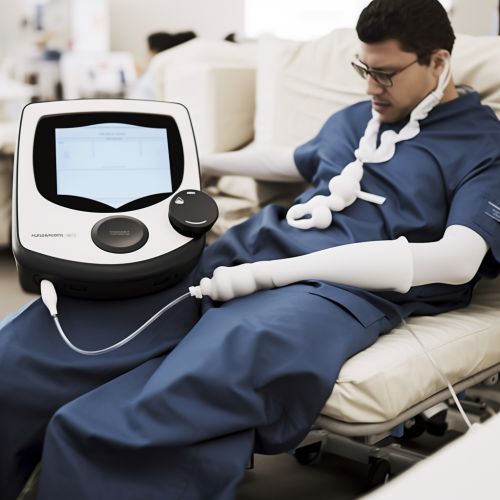Biliary Obstruction
Overview
A Biliary obstruction, also known as a bile duct obstruction, is a blockage in the tubes (ducts) that carry bile from the liver to the gallbladder and small intestine. Bile is a fluid produced by the liver that aids in the digestion of fats and the removal of waste products from the body. When an obstruction occurs, bile can't flow properly and builds up in the liver, which can lead to jaundice and other serious health problems.
Causes
Biliary obstruction can be caused by a number of conditions. The most common cause is gallstones, which are hard particles that develop in the gallbladder. Other causes can include inflammation of the bile ducts, cysts, benign or malignant tumors, infection, trauma or surgery in the bile duct or pancreas, or abnormalities in the pancreas or bile ducts that are present at birth (congenital).
Symptoms
Symptoms of biliary obstruction can vary depending on the cause and severity of the blockage. Common symptoms can include:
- Jaundice (a yellowing of the skin and eyes)
- Dark urine
- Pale or clay-colored stools
- Abdominal pain, particularly in the upper right side of the abdomen
- Nausea and vomiting
- Fever
- Weight loss
- Itching
Diagnosis


Diagnosis of biliary obstruction typically involves a combination of medical history, physical examination, and imaging tests. Blood tests may be performed to check for elevated levels of bilirubin and liver enzymes, which can indicate a blockage in the bile ducts. Imaging tests such as ultrasound, computed tomography (CT) scan, magnetic resonance imaging (MRI), and endoscopic retrograde cholangiopancreatography (ERCP) can be used to visualize the bile ducts and identify the location and cause of the obstruction.
Treatment
Treatment for biliary obstruction depends on the cause and severity of the blockage. The primary goal of treatment is to relieve the obstruction and allow bile to flow normally again. This can often be achieved through endoscopic or surgical procedures. In some cases, medication may be used to dissolve gallstones or treat underlying conditions such as infection or inflammation. If left untreated, biliary obstruction can lead to serious complications including infection, liver damage, and in severe cases, death.
Prevention
Prevention of biliary obstruction primarily involves managing the risk factors for gallstones, the most common cause of the condition. This can include maintaining a healthy weight, eating a diet low in fat and cholesterol, and getting regular exercise. Regular check-ups with a healthcare provider can also help detect any potential problems early.
